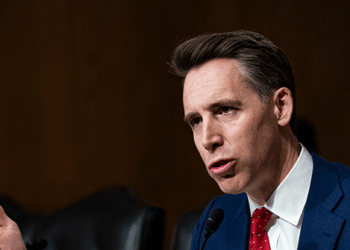President Trump signed an executive order on Tuesday that asked for a list of policy recommendations to protect access to in vitro fertilization and “aggressively reduce out-of-pocket and health plan costs for such treatments.”
Mr. Trump has asked the assistant to the president for domestic policy to provide that list within 90 days.
The executive order does not change any policy and does not mention some of Mr. Trump’s campaign promises on the topic, including making the treatment free. Here’s what to know.
Campaign promises
After the Supreme Court overturned Roe v. Wade in 2022 — a ruling that Mr. Trump claims to have brought about — patients and their doctors grew concerned about the fate of fertility treatments, especially after the Alabama Supreme Court ruled in February 2024 that frozen embryos in test tubes should be considered children.
Later in the year, while on the campaign trail, Mr. Trump began expressing support for fertility treatment and in October, he gave himself the curious nickname of “father of I.V.F.” in a town-hall event that was focused on women’s issues. His campaign later said the comment was made in jest.
Mr. Trump said last summer that if he won the election, he would require insurance companies or the federal government to pay for all costs associated with in vitro fertilization treatments, effectively making the treatment free for patients. The announcement came with little detail about the proposal or how the costs might be addressed. The executive order the president signed on Tuesday makes no mention of such a policy or the possibility of a coverage mandate.
Use of fertility treatment
Couples who choose I.V.F. are still in the minority of those trying to conceive. But prospective parents’ use of I.V.F. has gone up, according to the Pew Research Center. In 2023, 42 percent of adults said they had used fertility treatments or personally knew someone who had, a 33 percent increase from five years prior, according to the research center.
In this group of people, according to Pew, most people who said they had used I.V.F. were upper-income adults.
Health care coverage
Whether or not insurance covers I.V.F. treatment depends on what kind of insurance the patient has and where they live.
One round of treatment can cost up to $25,000, and success is not guaranteed. Prospective parents can go through multiple rounds.
“Just a handful of states require some sort of coverage for I.V.F. in state-regulated insurance plans,” the executive order states, and only a quarter of employers cover the treatment.
But making the government pay for it could be difficult. It would mean creating essentially a single-payer health care system for a single condition. The approach would require Congress to fund a new division of a federal government to oversee the program.
Similarly, requiring insurers to pay could be challenging. It would most likely mean passing laws in Congress or persuading a panel of experts to add I.V.F. to a list of free preventive women’s health services established by the Affordable Care Act (known as Obamacare), the health coverage law Mr. Trump tried to repeal.
“Millions of people are left out of getting access to I.V.F. through Obamacare,” said Barbara Collura, the chief executive of Resolve, a patient advocacy organization.
But changing the law could be tough, partly because Congressional Republicans have not been on the same page as Mr. Trump on this topic. Last year, they voted against bills that would protect the legality of I.V.F. on two occasions.
A dropping birthrate
The executive order states that Mr. Trump has “long advocated for more babies” to be born.
Fertility rates have been generally falling since the end of the baby boom in the mid-1960s. The decline accelerated after 2008, seemingly linked to the Great Recession, according to the Pew Research Center. The birthrate in the United States had grown each year from 2003 to 2007 before taking a turn.
In 2023, the total fertility rate in the United States dipped to 1,616.5 births per 1,000 women, according to the Centers for Disease Control and Prevention, a historic low that is far less than the rate needed to maintain the population size, 2,100 births per 1,000 women.
What’s next?
“I see this order as a first step,” Ms. Collura, the head of Resolve, said. “We want to hold the administration accountable.”
She added that her organization had done a lot of work on this already and could hand proposed policy changes to the administration “on a silver platter.”
Lucky Sekhon, a fertility doctor in New York, said on social media that she supported any move to expand access to I.V.F. treatment. But, she said that “an executive order alone is not going to fix the deep rooted issues that we have when it comes to fertility care access.”
On top of the high out-of-pocket costs, Dr. Sekhon said in the video that medical professionals often play a “game of cat and mouse” with insurance companies.
“All too often, the insurance coverage that does exist flies in the face of what we actually medically are recommending,” she said. “So for this kind of executive order to actually mean something for patients, we would need to see concrete action at both the state and federal levels.”
The post What Does Trump’s Executive Order for I.V.F. Mean? appeared first on New York Times.




